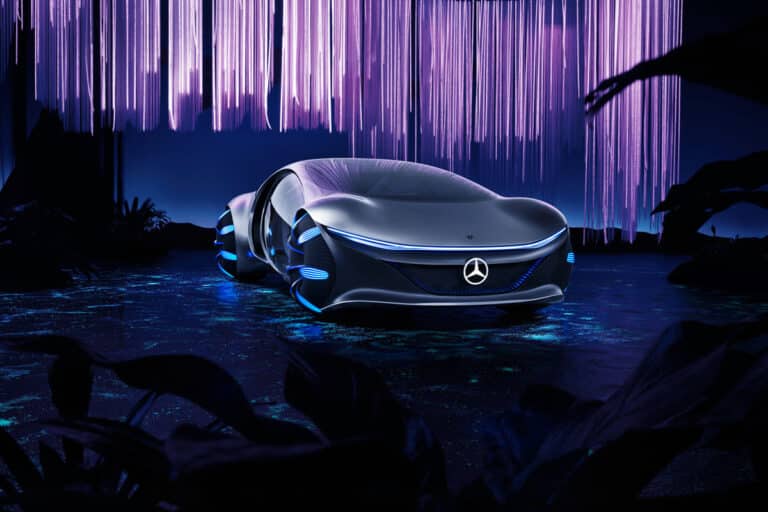Mercedes-Benz has partnered with Disney on a car that can read your mind

First, there was the car; then the automatic car; then the self-driving car… But watch out Tesla, because there’s a new kid on the block, one that reads your mind. Yep, let that sink in for a minute.
On the 7 September 2021, at Munich’s IAA Mobility 2021 vehicle showcase, Mercedes-Benz promoted its ambitious and, let’s face it, pretty ridiculously vision for its new concept car, a model which has an array of high-tech, futuristic features—akin to a sci-fi novelist’s wet dream. But there’s one particular feature that really takes the biscuit: mind-reading. No seriously, the model includes a brain-computer interface (BCI) headset capable of converting a driver’s neural activity into real-time console commands like temperature control, interior lighting customisations and AC speed. Because reaching over to flick on the air con while driving isn’t the most first-world problem you’ve ever heard of.
Mercedes-Benz and... Disney?
Although this concept car first reared its head during last year’s Consumer Electronics Expo (CES) in Las Vegas, this is the first time car fanatics have heard of it since—with Mercedez announcing it’s come via a partnership with Disney. Seriously, the Disney—as if ESPN, The History Channel and pretty much every millennial’s childhood wasn’t enough, they’re now branching into the automotive market.
It’s said that the ‘AVT’ in the model’s name stands for ‘Advanced Vehicle Transformation’. Although vague—I’m still trying to work out what that actually means—it does play into the futuristic vibe Disney and Mercedes are obviously tapping into. Sorry to burst the bubble but—although to some degree, the concept car’s brain-computer interface is functional—you won’t be cruising down the motorway using just your brain anytime soon.
In an official press release, it was stated that the concept car’s design is “similar to the neuronal connection between the Na’vi and the nature in the visionary Hollywood blockbuster Avatar.” The partnership has landed the car with the name AVTR… Someone needs to have a word with the Mercedes’ marketing team—‘Avacar’ was literally right there in front of them.
And that’s a good thing… First, the real-world safety of this car, once on the roads, would be sketchy at best and outright dangerous at worse. More importantly though, as we’ve seen with Elon Musk’s Neuralink, brain-computer interface technology is ethically messy, with many risks involved concerning an individual’s digital data.
Spoiler alert: it’s nothing new
That doesn’t mean that BCIs don’t exist outside of PR stunts and conceptual models from multinational corporations. And although the branding team behind this futuristic, science fiction-esque concept car may want you to think otherwise, brain computer-interface technology has actually been around for quite some time now.
In fact, this year, researchers at BrainGate—an organisation that develops BCIs out of Brown University in an attempt to aid individuals suffering from neurological disorders—successfully demonstrated the first instances of high-bandwidth wireless interfacing between human test subjects and a tablet computer. Researchers suggest the technology could aid the reliable restoration of communication and mobility for people with paralysis.
All this goes to show that, although as cool as the concept car may be, there are significantly more impactful and humanitarian purposes for using BCI. I respect the designers for coming up with such a sleek and eloquent design, I’ll give them that. It does look like something straight out of Avatar—but that’s where my interest ends. As for me, I’ll keep cruising in my very modest Hyundai, even if I have to turn on the AC by hand (not brain).





